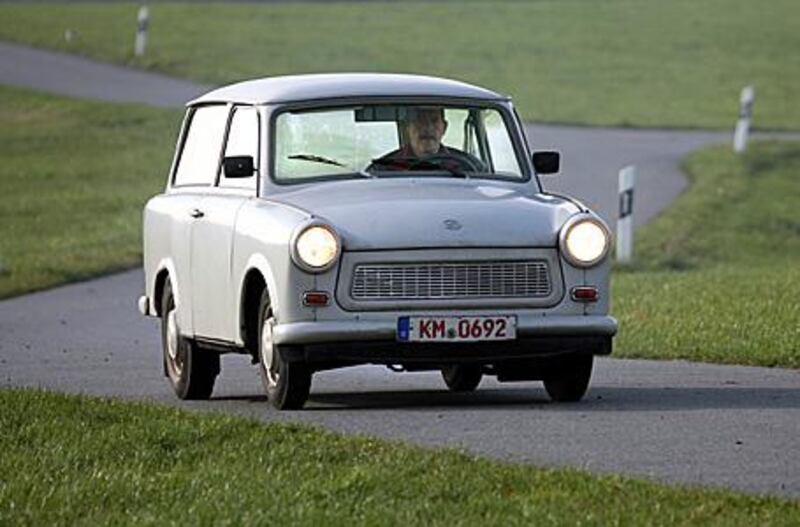Berlin was literally a city of two halves during the Cold War. West of the Berlin Wall, fat cats cruised the streets in gleaming Mercedes; a symbol of sophistication and capitalist comfort. To the East, they drove the inimitable Trabant; a symbol of simplicity and communist frugality. This small, boxy, proletarian saloon was spartan, crude and humiliatingly underpowered; the antithesis of the reckless indulgence and cosseted comfort of western sedans. And yet, with waiting lists stretching to 15 years, it was one of the most sought-after cars in Europe. With a measly two-stroke power plant delivering a frankly pathetic 26hp, and with a positively pedestrian top speed of 112 kph, it wasn't designed for the fast lane. Like the communities they served, they lacked power, embodied uniformity and eschewed excess.
The Trabant was the prized possession of any self-respecting communist household and, between 1957 and 1991, more than 3,000,000 were produced and distributed throughout the Eastern Bloc. Although it proved robust and reliable, it was a car that required a lot from its driver. There were no electronic gizmos or driver aids in this redoubtable runaround. Indeed, to refuel, the bonnet had to be hitched up, petrol and oil added and then mixed by hand.
You may assume that such simplicity brought an environmental benefit, but Trabants were notorious for leaving billowing exhaust plumes in their wake, and they were nine times more polluting than their cultured counterparts in the west. Their maxim was "no frills, low bills". When the Wall came down in 1989, one of the most memorable and poignant scenes of that emotive time of history was the flood of liberated Trabants pouring into the West. At first, they were mocked by West Berliners, and the myth was born that they were made of cardboard, when in fact they used fibre-based Duroplast panels. They were so ubiquitous that they sold for a handful of Deutsche Marks as aspiring East Germans looked to indulge in the trappings of consumer culture.
As the millennium approached, the image of the Trabant changed. From simply utilitarian, it became über cool as it was adopted as the ultimate retro status symbol. It can now be seen in classic car parades, vintage rallies and even in custom-designed, supercharged form in the drag race strips of Eastern Europe. The Trabant is a car that evokes more sentiment and nostalgia than perhaps any other; a vehicle so synonymous with the history of a once-divided city that should be viewed as an artefact as much as a mode of transport.
tbrooks@thenational.ae






